#Hiking clothing
Explore tagged Tumblr posts
Text
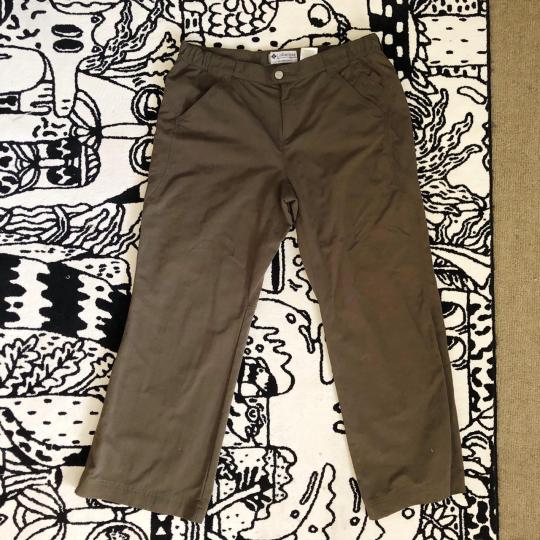

Brown Khaki Hiking Pants - Columbia from GhoulWorld
#depop#columbia sportswear#hiking pants#ranger#outdoor#hiking clothing#clothing#outdoor clothing#outdoor pants
38 notes
·
View notes
Text
10 Essential Tips for Beginner Hikers: Start Your Journey Right
Discover essential beginner hiking tips to kickstart your outdoor adventures. Learn about gear, safety, and trail etiquette for a confident start on the trail.
Starting your first hiking trip can be thrilling and fulfilling. But, it’s key to be well-prepared and have the right mindset. These 10 essential tips for beginners will set you up for success, whether it’s a day hike or a longer backpacking trip. Key Takeaways Follow the Leave No Trace principles to respect the outdoors and minimize your impact Choose a beginner-friendly trail that matches…
#beginner hiking tips#elevation gain#first aid#hiking backpack#hiking boots#hiking clothing#hiking safety#hiking shoes#hiking trails#leave no trace#map reading#offline maps#respect the outdoors#trail difficulty
0 notes
Text
Clothes for Backpacking: The Ultimate Guide to Gear Up for Your Adventure
Image Source: Unsplash Are you planning a thrilling backpacking trip into the wild, unpopulated areas of the world? As an experienced backpacker, you know that having the right hikers clothing is essential for a comfortable and successful journey. In this comprehensive guide, we will walk you through everything you need to know about choosing the best backpacking clothing for your…

View On WordPress
0 notes
Text
From Head to Toe: Our Top 10 Picks for Outdoor Clothing to Help You Conquer the Wilderness
Conquer the outdoors with our top 10 picks for ultimate adventure gear! From head to toe, we've got you covered with stylish, durable, and comfortable outdoor clothing. Let's gear up and get ready for an adventure! 🌲🏕️🧭 #adventuretime #outdoorclothing
Importance of Choosing the Right Outdoor ClothingFactors to Consider When Selecting Outdoor Clothing To Conquer the WildernessMaterialComfortDurabilityTop 10 Picks For Outdoor Clothing For Conquering the Wilderness 1: The North Face Men’s Resolve JacketSpecs2: Columbia Women’s Arcadia Ii JacketSpecs3: Patagonia Men’s Nano Puff JacketSpecs4: Arc’teryx Women’s Atom LT HoodySpecs:5: Merrell Men’s…

View On WordPress
#Breathable clothing#Camping clothing#Clothing material#Comfortable clothing#Comfortable outdoor clothing#Durable clothing#Durable outdoor clothing#Gore-Tex#Gore-Tex clothing#Hiking clothing#Merino wool#Merino wool clothing#Moisture-wicking clothing#Nylon#Nylon clothing#Outdoor clothing#Outdoor clothing picks#outdoor gear#Reinforced clothing#Weather-resistant clothing#Wilderness clothing#Wilderness survival#Wilderness survival clothing
0 notes
Text

AHHH I’m so happy so many of you like the au,,, there will be more,,, for now here’s Basch and Elise ,,, a little family picture
#hetalia#aph liechtenstein#hws liechtenstein#aph switzerland#hws switzerland#they didn’t actaully hike to zermatt they probably flew in or some shit#that’s why they dressed not in hiking clothes yes#or maybe they drove from the resort nearby WHO KNOWSSSS
606 notes
·
View notes
Text
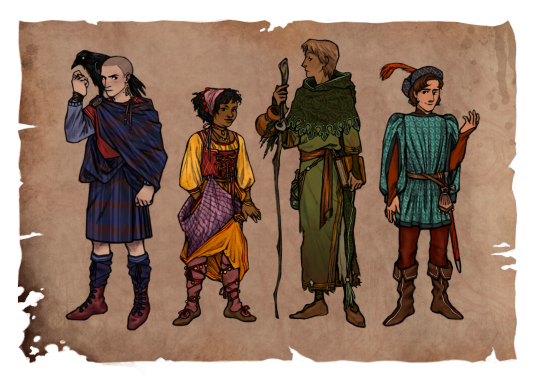
psuedo-medieval fantasy AU ✌️✌️✌️
everyone give it up for ronan's great kilt i had to google so many diagrams to try and figure out how they worked. also big thank you to my mom for gansey's dumb hat btw she was like 'you HAVE to keep the dumb hat'
#trc#my excuse for any historical inaccuracy here is that they're all actually just at a REALLY pretentious renfaire#i DID use references though blue's hiked skirts have historical precedent for peasant women as long as there were hose beneath#i will say the exposed stays are Inexcusable and Not Period but w/e. also she should not be showing that much hair.#also ronan's not wearing black bc black clothing was really hard to produce in the 1400s or whenever the fuck bc it took so much dye#ronan lynch#adam parrish#blue sargent#richard gansey#my art
386 notes
·
View notes
Text
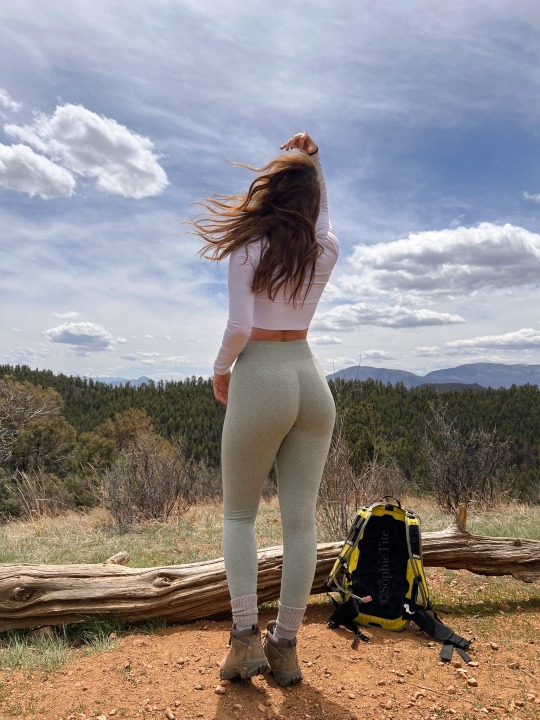
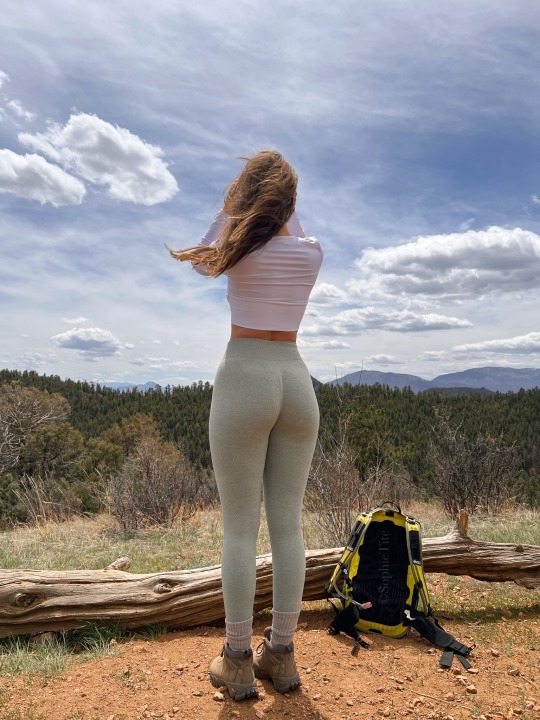
When you're trying to take pics on the trail but the wind already made alternative plans. Thats okay though because the sky looks painted on 😮💨
#natural girl#beautiful figure#nature girl#sexy outdoors#beautifulgirlsinnature#girls in nature#nature goddess#mountaingirl#day hike#hiking trail#leggings#girls in leggings#girl butts#girls who hike#legs for days#beautiful views#sophietite#outdoorgirl#get outside#the great outdoors#naturelovers#mountain view#hiking#crop top#sexy figure#gorgeous#so hot and sexy#see me naked#tight clothes#nice and tight
200 notes
·
View notes
Text

#wholesome fully clothed post#sorry about that#but look at my morning views!!#me#brat#mountain#sunrise#golden hour#hiking#nature#photography#pnw
112 notes
·
View notes
Text
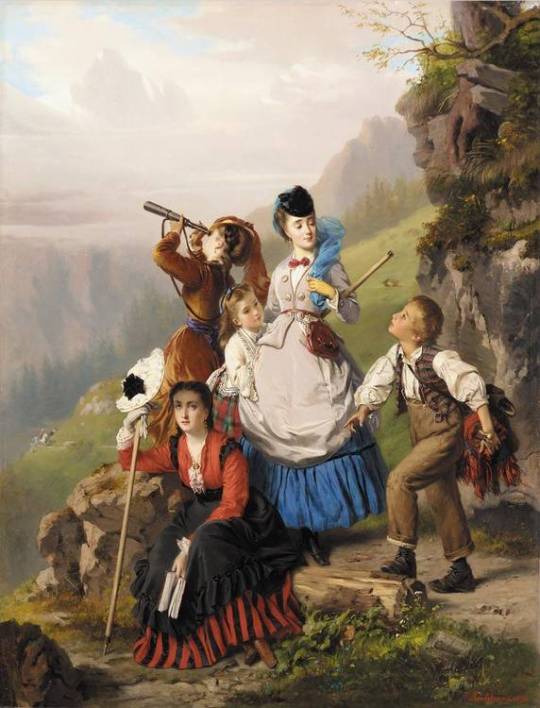
Charles Edouard Boutibonne (1816-1897) "The Young Mountaineers" (1868) Academicism
#paintings#art#artwork#genre painting#landscape#charles edouard boutibonne#fine art#academicism#french artist#genre scene#hiking#hike#mountain#mountains#clothing#clothes#female portrait#portrait of a girl#portrait of a woman#male portrait#portrait of a boy#portrait of a man#1860s#mid 1800s#mid 19th century#a queue work of art
131 notes
·
View notes
Text

#naked into the wilderness#nude outside#nude life#me#nudo#outdoor fun#naked swimming#naked hiking#naked fun#normalize nudity#outdoor nudity#naturismo#naturism#naturist#get naked#no clothes#my pics#nude photos#naked male#naked boy#nude beauty#nude pose#natural body#nudité#naked in nature#nudepics#free spirit#being naked#nude picture#nude male body
53 notes
·
View notes
Text
my favourite thing to do when designing outfits for characters is for sure thinking like. “can i imagine this guy taking the time to put this on in the morning.” cuz this DOESNT mean that characters won’t ever have fancy and fun outfits, but i feel like it does mean that if they DO then that’s also gotta say something abt the character
#and it could be a BUNCH of different things. maybe this character just likes dressing up. maybe it’s religious. maybe it’s to impress#etc etc#STUFF LIKE THAT#i love when you can just like. read into characters by looking at what they’re wearing or what they’ve got in their rooms n stuff#if your dnd adventurer who essentially hikes around is wearing like. a bunch of fancy clothes then maybe that implies that this guy is like#willing to go through pretty significant discomfort and inconvenience just to look good#ITS RLY FUN I THINK
101 notes
·
View notes
Text
Weekends should be three days I think: one day for chores, one day for rest, and of course, one day for hiking.
#i need to go shopping for clothes this weekend#but I also desperately want and need to write#but then......when hike? 😭
55 notes
·
View notes
Text
Beginner Hiking Guide Part Three: What to Wear Hiking

Adequate and appropriate attire while hiking can make a big difference in your mobility, comfort, and even survival. Don’t worry about fashion -- nobody on the trail cares if you look good, and feeling good is far more important. Plus, you don’t want to wear anything that you don’t mind getting dirty, since you’re going to get sweaty and potentially dusty, muddy, etc. Focus on functional clothing for the activity you’re engaging in!
Comfort & Flexibility
You’re going to be moving a lot, so make sure you’re wearing clothes that you can move in! You’ll want clothes that fit comfortably and are sturdy enough that they won’t tear like tissue paper if you take a tumble, but that are stretchy and flexible enough that you don’t feel limited in your movements. Avoid anything that’s going to pinch or chafe.
If you don’t have hiking-specific clothes -- which, if you’re just getting started, you probably don’t -- don’t worry! Odds are there’s something in your closet that will work fine. A lot of non-cotton athleticwear is perfectly good for hiking -- I’ve used my gym leggings and workout shirt on the trail. The key is finding something that uses the right fabrics:
Fabrics
Good: Synthetic fabrics like polyester or nylon, as well as merino wool, are great for hiking. These fabrics are good at wicking moisture away from your body -- a key quality in base layers, or any fabric that touches your skin. You’re going to work up a sweat, so you want fabrics that will wick that sweat away and allow it to evaporate, rather than trapping it against your skin so you get clammy and chilled. Anything described as “quick dry” is going to be a good option. For socks, I always opt for wool.
Bad: Cotton of any kind, including denim. Cotton is like a sponge and will absorb moisture and stay wet. You know how when you do laundry, your jeans are often still damp after the rest of your clothes have dried? Jeans will also hold on to moisture from sweat or from wet trail conditions, chilling you on a long hike; a lot of hypothermia cases in backcountry are attributed to cotton clothing. So unless you’re doing a very short, easy hike in optimal weather conditions, avoid cottons.
Dress for the Conditions
I wrote in a previous segment about the importance of knowing the forecast for your hike; make sure you dress appropriately for the hike you’re undertaking, in the conditions you’re undertaking it in!
Hot weather: Wear light-weight moisture-wicking clothes that won’t trap sweat against your body and that will let you keep cool. If you have longer hair, bring something to tie it up/back to keep sweaty hair out of your face.
Sunny weather: If it’s sunny and you’re going to be out in direct light, consider a lightweight outer layer to protect yourself from the sun. A hat with a wide brim is also a good option, and definitely bring sunglasses!
Wet weather: If it looks like there might be rain, make sure you have clothing on that will dry quickly, and a rain shell/rain jacket -- something lightweight and breathable. Also consider packing an extra pair of socks (because nothing is worse than hiking in wet socks) and an extra warm dry layer since you’re more likely to get chilled when you’re wet.
Cold weather: Layer up! Make sure you are dressed warmly, and pack one more layer than you think you’re going to need. My dad always says, “If you wore all your layers, you didn’t pack enough layers.” (more on layers below). Also be sure to have a hat that fully covers your ears, a scarf or buff or other means of keeping your face and neck warm, gloves/mittens, and warm wool socks.
While you will probably be pretty warm from exertion while you’re hiking, you’ll find yourself cooling down quickly when you stop for breaks-- or if you have to stop due to an injury or other problem. Always pack for the coldest you might get. (On a longer, more remote hike, this should include ‘how cold I’ll get if I get lost and spend the night outside.’)
How to Layer for Warmth:
Underwear: Synthetic, moisture-wicking, and comfortable. If you have breasts, make sure you have adequate support. I’m a fan of high-impact sports bras and long boxer briefs to avoid chafing/riding up.
Base Layer: Wear a top in a moisture-wicking fabric (pretty much any synthetic workout shirt will do!); if it’s mild enough you don’t need multiple bottom layers, opt for quick-dry pants or athletic leggings and you’re probably good there. If it’s cold, consider wearing non-cotton leggings or long underwear as an insulating layer under a pair of pants -- if you’re like me and slip and fall on your ass a lot, your cold wet butt will thank you.
Mid Layer: This is your insulating layer that traps in heat. In warm or mild temperatures, sticking a light jacket or hoodie in your pack for if you need it is fine, but if temps are dipping colder, bulk up your mid layer(s). I usually wear a fleece jacket and then an insulated puff jacket over it when I hike in winter. You may also consider warmer pants (I have fleece-lined joggers for when it’s REALLY cold).
Outer Layer: If base layers keep away the moisture from your skin, and mid layers trap in heat, your outer layer is preventing heat loss and moisture from everything else. Windbreakers and rain shells can keep high winds from biting through your other layers and stealing away body heat, and keep rain from soaking you through and similarly putting you at risk for hypothermia.
Will you need all these layers on a hike? Probably not! In the middle of summer at low elevations, I hike in base layers and throw a rain shell in my pack and I’m pretty much good. But in winter, I’ve had up to 5 layers. So it will depend on the conditions.
Also, be ready to take off and add layers throughout your hike. I usually shed a layer within the first half mile of a hike as I get warmed up, but will often put layers back on when I reach summit, or am taking a snack break. Dropping layers when necessary will prevent you from sweating too much (soaking your clothes and dehydrating you).
Footwear:
Perhaps the most important item in your hiking ensemble is your footwear. Proper shoes can make or break a hike. Or a leg, for that matter.
Hiking boots are thusly named because, well, they’re good for hiking. You want footwear that:
is sturdy
has good grip/traction
keeps you comfortable by cushioning, supporting, and protecting your foot.
Good: Hiking boots. Trail/hiking shoes. Hiking sandals, weather permitting. Maybe sneakers, on a really flat and easy trail, though I don’t recommend them for more rugged trails.
Bad: Basically everything else. Ballet flats, flip flops, crocs, converse, etc. Anything that pinches or hurts your feet after a while. Any brand new shoes you’ve never worn or broken in.
Now admittedly, a good pair of hiking boots can be expensive. But if you’re going to invest in anything to get started while hiking, I beg you to invest in a comfortable pair of hiking boots/shoes. And practice walking in them and breaking them in before you hit the trail -- you will often find that the experience of walking uphill in a particular pair of shoes feels very different from walking in them on flat terrain.
Additional clothing notes:
Long pants vs. Shorts. I personally always hike in long pants, though I see plenty of people hiking in shorts in summer. I recommend researching trail conditions, the local ecology, and knowing your own heat tolerance. Long pants might not let you cool off like shorts, but they do protect your legs from sun exposure, ticks and other insect bites, and scratches and scrapes from brambles or rocks.
Socks. I highly recommend wool socks for hiking, year-round. Also, make sure that your socks fit well; loose, baggy socks are more likely to slip around in your shoe and cause blisters, along with socks that are shorter than the ankle of your shoe.
Jewelry. In addition to jewelry potentially catching and tangling on things, there’s the risk of it getting lost and being near impossible to find. I recommend you don’t wear or bring anything overly precious to you while hiking. That includes clothes you really really love, because you will get gross.
Binders. If you wear a binder, consider not wearing it while hiking, or wear a binder a size up from your usual. You will know your body and limitations best, but as a matter of safety you don't want your breathing restricted or to risk overheating, and it is widely recommended not to bind while engaging in strenuous activity.
In Summary:
Dress comfortably for activity
Avoid cotton ([Edna Mode voice: NO JEANS!]) and stick to synthetics that will wick away moisture and dry fast
Factor in weather and trail conditions into your clothing choices
Layers are your friend (and pack a spare layer just in case)
Get yourself some decent hiking shoes that won’t fall apart, slip and skid, or leave your feet blistered and hurting
Don't worry about looking stylish; just stay safe, comfortable, and have fun!
<< Previous Part: Preparations - Knowledge is Power Next Part: What to Bring Hiking >>
91 notes
·
View notes
Text

If you're cold, they're cold - bundle up your local goo man no matter how much he says he doesn't need it. Nerys please I don't feel cold it's fine what no I'm not "blushing" don't be ridiculous.
#star trek ds9#kiraodo#kira nerys#odo#ds9#star trek#kat arts#fanart#ODO CAN'T BLUSH HE DOESN'T HAVE BLOOD SO HE MELTS SEND TWEET#it suddenly got VERY COLD here and I'm like 'screw it we ball and we draw faves in clothing I have to wear now'#color scheme inspired by a hike I went on last week#and how the sun came in through the trees and had a ring of yellow with purple shadows
36 notes
·
View notes
Text


Traded in the hiking clothes for something a little more dinner appropriate. Now I'm just enjoying this wine until it's dark enough to see the meteor shower. . . .as long as I can stay awake that long 🤷♀️
#personal#banff adventure#ate all the pizza#drinkin' all the wine#ok but not being in sweaty hiking clothes is pretty nice 😂
61 notes
·
View notes
Text

Crossing the Lochsa River, via the Warm Springs Pack Bridge, Nez Perce-Clearwater National Forest, Idaho. Planning to hike barefoot and nude, I wore only a Running Kilt from the trail head parking area, across the bridge, and to the junction of the Stock By-Pass and Warm Springs trails at the other end of the bridge.
7 notes
·
View notes